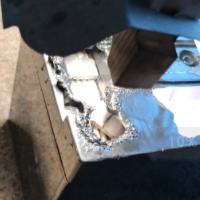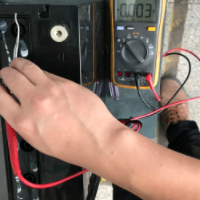Greetings!
We are pleased to launch our blog, the GEMSTAR It would be a nice terminal for everyone to send and receive the information sharing about of business and products related to lead-acid batteries. Any sound of intelligence would be welcome.
The short-circuit was found and damaged on the corner between one piece of positive plate and another negative plate. Obviously the direct contact between positive and negative plates would result in short-circuit and damage the battery internal cell connections. The customer won't see the damage or incapable to see it because the battery is sealed structure, the user might not have battery-related knowledge and there is no suitable tools to open the battery and check the plates status one by one. Then this battery was easily returned to us. We cut open the battery and check every piece of plates located in such damaged cell.
There was a hole penetrated through the AGM separator where we found the AGM was punched by the burr like a tiny thorn on the surface of the plate-which was not well brushed and treated. As we know, the finishing process of plate manufacturing (including surface treatment, lug cutting and brushing) is very important apart from the electric factors of a plate formation. A well finishing process will greatly help the battery assembly going-on smoothly. In this case, the GM12-100HR is designed for High-Rate discharge purpose, more number of plates were stuffed into the battery and cooperating with thinner AGM separators. The burr on the plate surface was compressed to stick through the AGM and get direct contacted with another plate, the short circuit occurs. Shall avoid such short-circuit under higher assembly pressure.






Key words for battery engineering: Plate finishing process, Brushing, Surface Treatment, Burr, Short Circuit, Assembly Pressure.